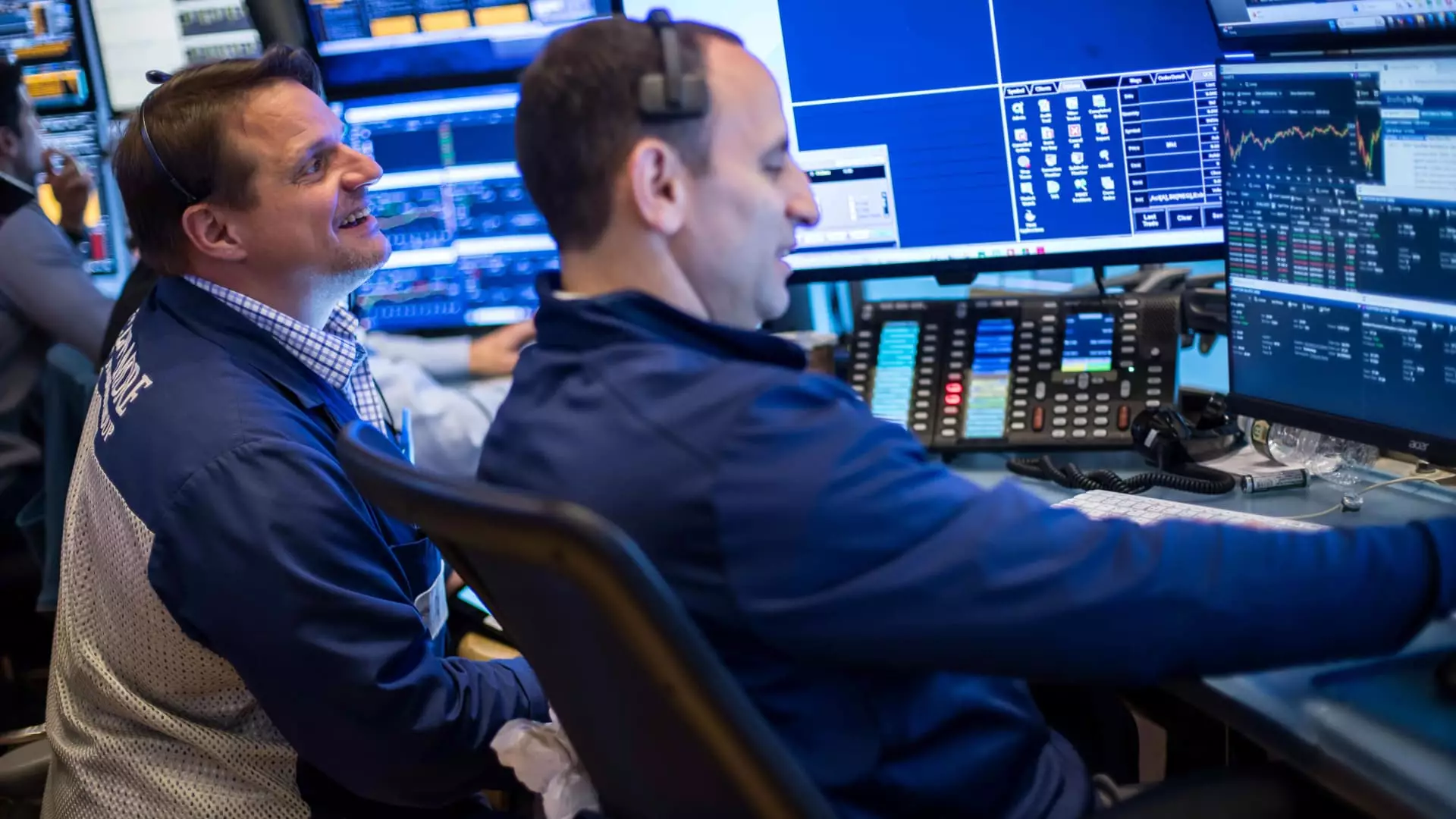On a day when anxieties about the economy were palpable, U.S. stocks rose significantly, buoyed by better-than-expected nonfarm payrolls data released last Friday. The Dow Jones Industrial Average surged 443.13 points, or 1.05%, to a closing mark of 42,762.87, demonstrating a remarkable rebound after tech stocks had previously weighed it down. It’s fascinating how a single report can flip market sentiment, shifting from a dubious outlook to a more optimistic one, albeit temporarily. Positive payroll data doesn’t just uplift indexes — it reinvigorates faith in the economic recovery narrative, stirring hope and investment.
The S&P 500 also demonstrated resilience by climbing to an encouraging 6,000.36, reflecting a 1.03% increase and marking its first venture above the 6,000 threshold since last winter. The Nasdaq Composite followed suit with a robust 1.20% rise, closing at 19,529.95. These figures underline a critical reality: stocks are driven not solely by intrinsic value but by sentiment, speculation, and reaction to news — a precarious balancing act that investors tread daily.
Tesla’s Rollercoaster Ride
One highlight among the broader market movements was a more than 3% ascent in Tesla stocks. The electric vehicle giant’s journey exemplifies the volatility inherent in today’s market. Just a day earlier, shares plunged by 14%, driven largely by a bizarre Twitter spat between Tesla’s CEO Elon Musk and former President Donald Trump. This dissonance in the market showcases both the volatility of tech stocks and the potential consequences when corporate leaders inject themselves into political discussions.
Amid such unpredictable fluctuations, companies like Nvidia, Meta Platforms, and Apple similarly enjoyed gains, suggesting a broader rally in major tech stocks. Investors seem to trust these innovations, despite shots of uncertainty stemming from regulatory discussions and market dynamics. The relationship between economic indicators and individual stock performance highlights the complexity of the modern market.
Mixed Signals from the Labor Market
Despite the surge in stocks, not all news was favorable. The May payroll report indicated an increase of 139,000, higher than expected but still lower than the revised figure of 147,000 in April. Additionally, the unemployment rate remained unchanged at 4.2%. While some analysts, like Ameriprise’s chief market strategist Anthony Saglimbene, viewed the labor market’s holding firm as a positive sign, I can’t shake the feeling of underlying vulnerability.
The mixed signals could suggest an economy struggling to maintain momentum. Last week also brought upward revisions in unemployment claims and disappointing numbers from ADP, revealing only a meager addition of 37,000 private sector jobs versus the forecasted 110,000. Such statistics imply that lingering economic, political, and trade uncertainties are casting shadows over consumer and business confidence.
The Tariff Tango and Its Implications
Market analysts are analyzing potential fallout from ongoing tariff negotiations, whispers of which have further complicated the economic outlook. Saglimbene expressed expectations that the implications of tariffs would start to unveil themselves in upcoming economic data. Uncertainty reigns, showcasing a precarious dance with trade relations, especially with China. While optimism may temporarily fuel stock prices, the fallout from such negotiations looms large, particularly for industries heavily reliant on international trade.
President Trump’s announcement of upcoming talks in London offers a glimmer of hope, yet one cannot help but notice the cautious approach markets exhibit. Having emerged more than 2% below its previous high in February, the S&P 500 embodies a market that has learned to hold judgment amid conflicting data. Compound that with the reality that weekly gains of 1.5% for the S&P 500 and 1.2% for the Dow can evaporate quickly in the face of adverse news.
The interplay between political leadership and market performance cannot be underestimated. Investors will remain vigilant as they assess this delicate balance between economic indicators and political maneuvers. The lesson here might be that while data can generate temporary spikes, sustainable growth necessitates consistency, transparency, and a coherent strategy that prioritizes not just profits but national economic resilience.


Leave a Reply